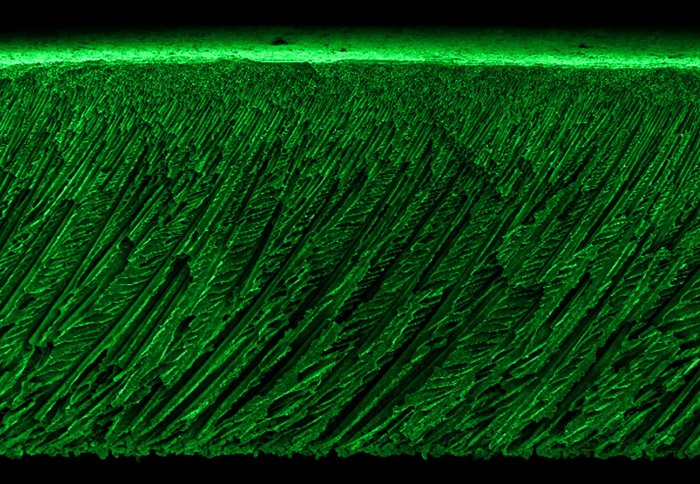Greener, cheaper and simpler ultrafiltration

Imperial researchers have developed a new technique for making high-performance membranes with the potential to significantly cut production costs.
Filtration membranes are widely used in industry and healthcare for a variety of applications such as wastewater treatment, kidney dialysis and beverage clarification among others. Membrane production is a billion-dollar industry and researchers are increasingly looking for ways to increase membrane efficiency while reducing the cost of production. This is of particular concern in the production of ultrafiltration membranes with tiny pore-sizes of under 200 nm (a thousand times smaller than the width of a human hair!). When designing a membrane, the most important qualities apart from pore size are its mechanical stability and its permeation flux, which is the rate of flow through a membrane.
This new technique could have a major impact on the manufacturing of nanostructured polymeric membranes as it is both green and results in very high performance membranes.
– Professor Kang Li
Department of Chemical Engineering
Now, researchers from Imperial College London have developed a new technique called ‘combined crystallisation and diffusion’ (CCD) to produce membranes with pore sizes as small as 30 nm (more than eight times smaller than those usually achievable with similar methods). The new technique combines freeze drying with a widely used safe and green solvent, dimethyl sulfoxide. Normally there are two key issues with freeze drying: firstly producing sufficiently small crystals (and small pores) is challenging (but achievable). Secondly, once the crystals have been produced, they tend to agglomerate at a later stage which leads to an increase in their size. In this study, the researchers managed to overcome the problem of agglomeration using an innovative approach: they modified the temperature at one end of the membrane which allowed the polymer solute to diffuse through and prevent agglomeration of the crystal. The resultant membrane retained the original small crystal structure resulting in very small pores.
Professor Kang Li, lead author on the paper said “Our new method, which can be adopted to the existing method with minimal process modification, is attractive to industry as it is governed by fewer operating parameters so this means that it is more consistent and reproducible. The resulting membranes have a stable and high permeation flux, as well as excellent mechanical properties. This new technique could have a major impact on the manufacturing of nanostructured polymeric membranes as it is both green and results in very high performance membranes.”
The research was published in the leading cross-disciplinary journal Nature Communications, and was carried out by researchers from the Department of Chemical Engineering at Imperial College London. Future and ongoing work is centred around the possibilities of using this new technique with a wide range of membrane materials and trying to produce gas-separating membranes.
The work was funded by the EPSRC and the Marie Curie International Incoming Fellowships Programme.
Reference:
[Article co-written with Dora Olah an Undergraduate student in the Department of Chemical Engineering.]
Article text (excluding photos or graphics) © Imperial College London.
Photos and graphics subject to third party copyright used with permission or © Imperial College London.
Reporter
Michael Panagopulos
Department of Chemical Engineering